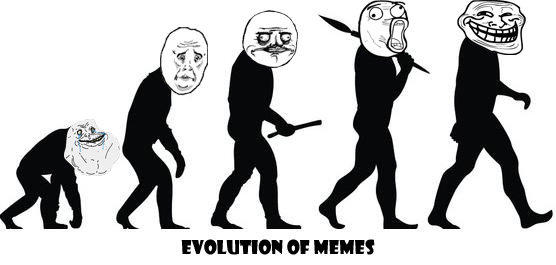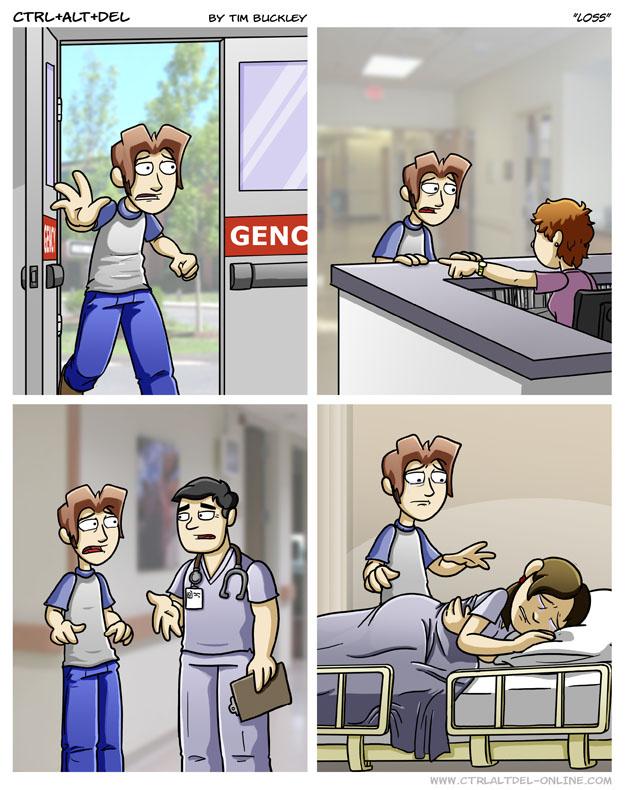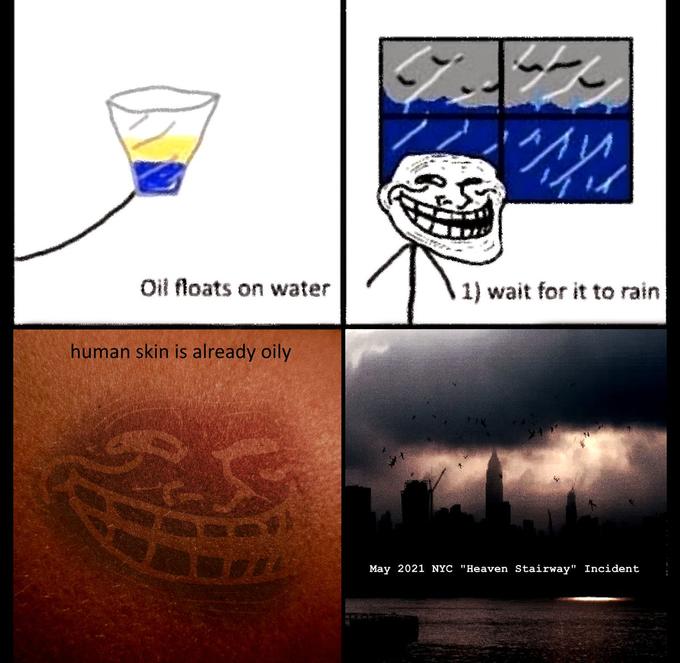Insights
What Is a Meme? The History and Evolution Of Memes Explained
Over the past 25 years, memes have become one of the most dominant forms of not only comedy but communication online.
There's nothing you can't say with a meme, and they're used by everyone from Gen Alpha all the way to boomers, even becoming a tool for politicians and brands in the modern day. What used to be a niche internet phenomenon has now transcended, with knowledge of memes becoming absolutely necessary to successfully decipher the social media landscape.
The history of memes is long, complicated and difficult to summarize, but here's a very brief overview of how they've evolved over the past few decades, beginning with the meaning and origin behind the term itself.

What Is a Meme?
Defining a meme isn't as easy as you might think. On the most basic, structural level, some might define memes as anything that spreads virally online. This is true, but only covers the online aspect of meme culture. In reality, the term "meme" is far more broad, encompassing just about anything that spreads through human interaction whether online or not.
The term "meme," derived from the Greek word "mimema" meaning "something imitated," was coined by evolutionary biologist and author Richard Dawkins in his 1976 book The Selfish Gene, which focuses on the importance of self-replication in natural selection.
In the book, Dawkins postulated that not only does biological information undergo natural selection, but that anything capable of replicating itself would also be susceptible to selection pressures, like ideas and beliefs. This can cover anything from a theory to a slang term to a funny picture of a cat.
Memes go through a process of "memetic evolution" through which they self-replicate, mutate and respond to selective pressures. This process is arguably the most visible online, where we've seen memes evolve and mutate countless times. However, it's important to keep in mind that memes are not an online-only phenomenon, with some of the earliest memes far-predating the internet.

Even the word "meme" has gone through memetic evolution over the past few decades. Now, it's common to see it used as a verb with terms like "get memed on," "well memed" and "memeing" becoming increasingly prevalent in online discourse.
People who make or share memes might consider themselves "memers" and those who have mastered the craft might call themselves "memelords." We've even seen the rise of meme sub-categories and terms, like "dank memes," "deep-fried memes," "moldy memes" and "wholesome memes."
This evolution of the term was not only essential as memes rose to prominence online but also necessary and unavoidable. It acts as a perfect example of how anything and everything can succumb to memetic evolution. So, what are some of the earliest examples of memes?
What Are Considered Some Of The Earliest Memes? (1920s—1990s)

Many consider Kilroy Was Here, a graffiti doodle drawn in various locations by U.S. soldiers during WWII, a prime example of a pre-internet meme that resembles what we see on social media today.
Through natural memetic evolution, soldiers saw and perhaps discussed the Kilroy drawing and chose to replicate it to spread its reach, turning it into a well-known symbol of WWII all these years later. As old as the meme is, it fits the mold of what makes a "modern internet meme" almost perfectly.
This same practice is done every day online: A meme page, community or creator sees a funny meme, they repost it, it gains visibility and this inevitably leads to further reposts and mutations.

Another interesting example is a 1921 comic strip comedically comparing someone's expectations after taking a photograph, to the reality of the photograph, as an early example of a meme format. This one's a little more debatable, though, as the image never gained significant spread until it was rediscovered by the internet.

In the same vein as Kilroy, the graffiti Frodo Lives similarly spread as a meme in the '60s following the paperback release of the Lord of the Rings novels. The phrase could be seen on bumper stickers, buttons, spray painted on walls, you name it.
"Frodo Lives" is largely considered a part of hippie counterculture, with Lord of the Rings being much less popular back then until the paperback was released. Kilroy and Frodo Lives are only two of many memes that have spread like this, with another prominent, more modern example being "The Manny Will Be Televised."

Even with this knowledge of early memes and memetic evolution, it's extremely difficult to nail down the first true meme. With the internet being a more contained realm than the entirety of human history, you might think it's easier to find the first internet meme, but unfortunately, that's not the case.
While much of the early internet has been archived in some way or another, a much larger portion has been lost to time. Memes can start in the most unexpected of places, from niche forums to chat rooms to long-forgotten websites. We do, however, have a good idea of some of the earliest internet memes.

When it comes to the internet, there are two memes that are widely cited as the first-ever, but lots of people argue over this. The first is Godwin's Law, an adage positing that the longer a conversation goes online, the more probable it becomes that Hitler or Nazis will be brought into the discussion.
Originally, the law pertained to Usenet threads and first appeared in 1990, but it gained widespread notoriety throughout the mid-to-late 1990s.

ASCII art and emoticons might be considered another early internet meme. As a concept, ASCII art, the practice of making images out of letters and numbers, has existed since the late 1800s when people began making images using typewriters. In the '90s, this concept gained further memetic spread online, remaining a prevalent practice today.
The abbreviation "LOL" has purportedly existed in its current form (standing for "laugh out loud") since the mid-1980s, when it was coined on a bulletin board system, a primitive method of communicating online, in Alberta, Canada.
The '80s iteration was actually a memetic evolution from the days of letter writing when LOL stood for "lots of love" or "lots of luck." Since then it's gone through a similar memetic evolution as "meme," seeing use as a verb with terms like "I lol'd."


In 1996, the "Dancing Baby" became one of the first widespread, mainstream memes, based on a widely spread animation of a diaper-wearing baby twirling around. The meme spread through email chains and became so popular that it was even referenced in an episode of The Simpsons in 2000.
In 1998, All Your Base became one of the first widespread gaming memes, with the Hampster Dance becoming another dominant meme in 1999.
These memes were inarguably much simpler than the memes we see going viral in the 2020s, but they set the stage for what comedy and communication look like on the internet today. It was a time of experimentation and learning and many of the elements that made these memes prevalent online remain visible in today's most iconic formats.
How Have Memes Evolved In The 2000s?

2000-2009
Memes changed a lot in the first decade of the 2000s, which is when many people's ideas of the "internet meme" as a concept originated. Coming out of the '90s, we saw the language of the internet develop through acronyms like "ROFL" and "LOL" with trends like LOL ASCII spawning memes such as the ROFLcopter.
Celebrities and pop culture icons also started to become the subject of memes, from more absurd examples like Bert is Evil to legendary actors like Chuck Norris.
Viral videos also started to take over as some of the most dominant memes, especially after YouTube launched in December 2005, bringing us rapid-fire meme hits at a pace never seen before. Between 2004 and 2009, we were blessed with classic hits like Chocolate Rain, Numa Numa, Salad Fingers, Charlie Bit My Finger, Keyboard Cat and the still beloved trend of Rickrolling thanks to the increasing prevalence of videos on the internet.
During this era, memes started to seep outside of the internet to more mainstream audiences more than ever, particularly the ones born from viral videos. We even saw mainstream celebrities, including talk show hosts like Ellen Degeneres, reacting to memes on TV, displaying early signs of their growing importance in mainstream discourse.
Of course, image macro formats still had their place on sites like 4chan, with memes like LOLcats becoming incredibly prominent around 2005, but there was no escaping the hold that viral videos had on internet users during this time.
Then, in the late 2000s, Advice Animal and Rage Comic formats brought image macros to new heights of popularity, paving the way for some of the most influential meme formats of the next decade. We also saw the rise of memetic characters such as Slender Man, ushering in a new era of creepypastas.

Loss is also worth mentioning as one of the most continually powerful memes to this day. The meme is one of the earliest viral examples of a meme that became so ingrained in internet culture that just the vague shape of its panels became a recognizable meme in and of itself.
For the chronically online, the shape of Loss became the ultimate test of whether or not you got memes, leading the way for still far-off formats like "things that look like Among Us."

2010-2020

By 2010, memes were solidified as one of the most popular forms of comedy and communication on the internet, at least for those who understood them. Doge, who remains one of the most legendary memes to this day, burst onto the scene in late 2010 and shook up the entire landscape, going on to inspire Doge comics and Dogelore as it became one of the most well-known icons on the web.
Rage Comics continued to dominate the online landscape early on during this era, bringing people comparably iconic images like the Trollface. Between 2010 and 2014, we notably saw memes like Bad Luck Brian and Scumbag Steve become online cultural icons, solidifying the idea (along with Rage Comics) that relatable=success when it comes to memes.

Then, sometime around 2013, memes started to take a dank, ironic and edgy turn.
Pepe the Frog, who had been around mostly as the "Feels Bad Man" format since 2009, started to become a widely used meme to convey more abstract ideas, with celebrities like Nicki Minaj, Katy Perry and even Donald Trump using it in the mid-2010s. Pepe also saw his fair share of controversy, getting embroiled in meme warfare with accusations of being a tool of the far-right.
Memes in the latter half of the 2010s became more absurd, relying on shock value along with nonsensical imagery and elements for humor.
Nostalgic animated films like Shrek and Bee Movie were turned into meme legends, Doge became a comic star, the most common elements of MLG edits became ironic meme fodder and, in 2016, Harambe the Gorilla was killed, leaving a permanent scar on social media.
It wasn't long after Harambe's death that Donald Trump became the President, coinciding with an increase in anti-SJW memes, cringe compilations and Karen content. There were a lot more memes and meme formats going viral faster and harder than ever before, and fewer and fewer of them made any real sense to those outside of the know.
This all led to what many consider the "surreal era" of memes between 2017 and 2020, denoted by formats like Lord Marquaad E, Ugandan Knuckles, the B emoji and deep-fried memes.
Around this timeframe, many meme lovers seemingly abandoned all sense and strived to create the most outlandish formats possible, perhaps in an effort to reclaim the "inside joke" feeling of early memes.
2020s

Some consider the early 2020s to be the "post-ironic" meme era. Many of the most well-known memes from the past four or five years, whether it's Wojak Comics, Trollface Incidents or Chad vs. Virgins, have a more cynical and reflective tone to them.
They borrow from tried-and-true meme tactics, such as relatability, recognizable iconography and even absurdity, but many have abandoned surrealism to focus more on cultural criticism as online culture wars have become increasingly popularized.
Depression has been a topic of memes throughout the 2010s, but it's never been so outwardly present in memes as it is in the 2020s. More often than ever, memes are being used to make legitimate cultural critiques in a humorous or inflammatory way. Of course, surreal and absurd memes still exist in their own circles, they're just not as desirable as those that take a stance among many these days.

One of the most notable formats of the 2020s was Among Us. The game was released in 2020 and became a smash hit thanks to the COVID-19 pandemic, reaching a level of oversaturation so mighty that it became one of the biggest post-ironic memes of all time. The memes were absurd and far-reaching, used to both make fun of those addicted to the game while also helping keep the game relevant.
This trend repeated itself with films like Morbius, which memers wouldn't let rest as a simply bad movie, instead turning it into more of a meme than a film. The popularity of social media and memes in general allowed both criticism and rampant embracement of these properties to reach new heights for better and for worse.
Conversely, beloved shows like Breaking Bad and The Sopranos became ironic meme hits as ways to celebrate them long after their finales.

Now, we're seeing the rise of artificial intelligence and what that does to the meme landscape.
Largely, people are revolting against it as it gets better every single month. Still, AI has resulted in some of the biggest memes of the 2020s and has become one of the most widely used tools to create memes as of late.
We're also really starting to see Gen Z and Gen Alpha's take on meme culture thanks to sites like TikTok becoming increasingly dominant in the digital landscape, which has made the rate at which memes come and go faster than ever before.
Memes are more varied than ever in the 2020s, and no matter what fandom you're in or what meme genre you're into, you can find exactly what you're looking for with just a little digging.
There's no telling what the next decade might bring in terms of memes, but one thing seems sure — memes will remain the primary form of online discourse for a long time to come.
For the full history of memes, be sure to check out Know Your Meme's encyclopedia entry for more information.
